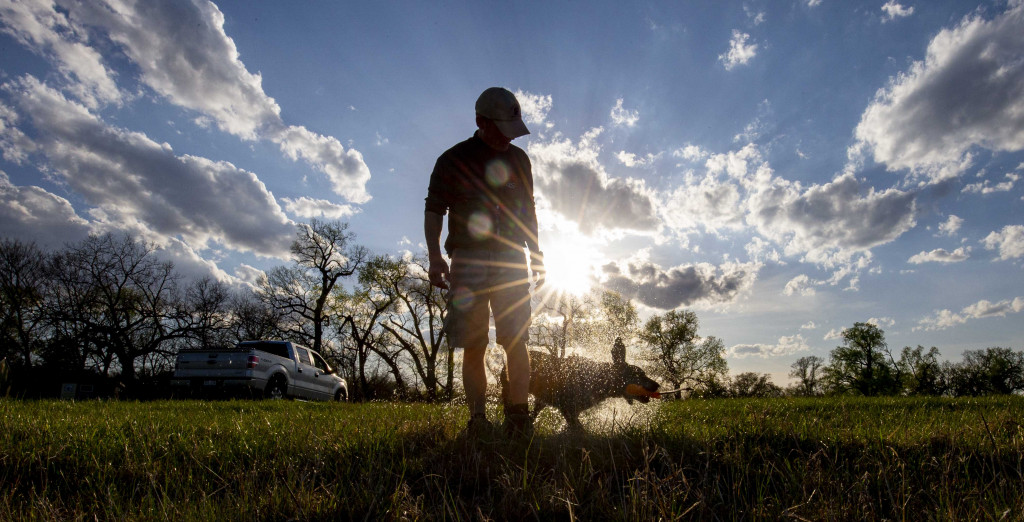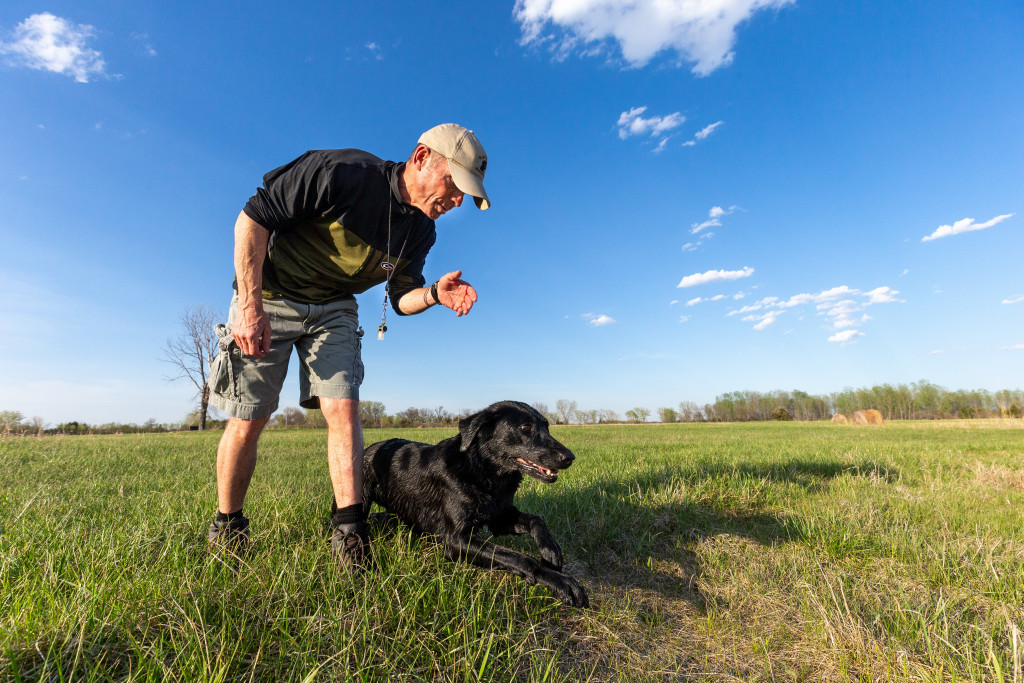
By Todd Mills
Training your own gun dog can be challenging, frustrating and rewarding all at the same time. It takes commitment on your part to finish what you start. Whether it’s your first or your last dog, watching your dog make that first retrieve or flush that first bird is well worth the time you put into it. Training is also important because an out-of-control dog with little discipline can ruin any good hunt.
Here are a few tips that I’ve found helpful when training my own gun dogs.
Keep Them in Shape
Much like us, a dog who is on a properly structured routine will perform best. Taking your dog for a “walk” will not allow him to get in the kind of condition he needs to be in. Dogs need to be active at a high level to keep them running at top speed during the season. If you’re a runner, take them with you. If you have access to a field, then use that area for retrieves and distance marks. Also be cognizant of your dog’s calorie intake this time of year. For example, during the season I’ll feed my dogs a higher caloric, higher protein dog food. During the off-season, I’ll switch to feeding them maintenance food. Come hunting season, an overweight dog can face joint issues and eventually even more serious issues like heat stroke.
Back to the Basics
Much like in our daily lives, the first thing that will go is the “fundamentals” associated with a fine-tuned gun dog if they’re not being repeated. A backyard is the perfect place to reinforce the commands of sit, stay, heel and come. Younger dogs, particularly around the adolescent stage, love to break the rules when they can. Take 20 minutes a day to repeat these commands and be stern about your follow up. If you allow your dog to take an inch, they’ll take a mile. Ask your family to serve as distractions so you can see how they handle diversion. After all, you’ll have plenty of those in the field, the blind and the boat.
Research Dog Training Tips
Whether you’re new to the dog training world, or a seasoned veteran, you can never learn enough about training gun dogs. YouTube is a great resource to reference training techniques. Find a mentor whom you can bounce off ideas and troubleshoot. In this day of electronic media, you can find several sources that can guide you in the right direction. Understanding the dynamics of your dog and the personality they bring can be helpful in your training approach. One of my favorite resources for discovering this potential and troubleshooting is the book The Art of Raising a Puppy by the Monks of New Skete.
Keep Them Steady
After a certain amount of down time, your hunting dog will often think she’s off the hook. Some just look for reasons to break the rules, so this is the perfect time for them to test your patience. Short, structured training sessions that reinforce the basic commands can keep your dog steady when the season arrives. Continually review sit, stay and heel while providing distractions. This can be done in your backyard, in your living room or in the field. Do this three times a week throughout the summer months, and you’ll avoid stressful moments when the bullets are flying.

Hunt Your Dog
Sounds like a overused cliché, but in the dog world, it’s fact. You’re going to experience many ups and downs in the training process. It’s a marathon not a sprint, so ongoing repetition with your dog is the key to being successful once hunting season starts. And don’t be “embarrassed” to hunt your dog with others, even if you think they might screw something up. All the training in the world is no good if you don’t put live birds in front of your pup. Nothing replaces shooting birds over your dog. I’ve seen dogs with very average blood lines excel around other more “champion” blood lines purely because they have the most in-game experience. Stay committed to the process and take this time to not only improve your dog’s chances of being successful, but to also socialize them around others.
One of my favorite quotes comes from legendary waterfowler Nash Buckingham circa 1947:
“The best long-range shotgun load to have in one’s boat for mallards is a fine retriever.”
Well said, Nash.
Partner With Others
Finding someone to run dogs with can help hold both you and your dog accountable. Some of my good friends have come from the dog circuit, and the ability to troubleshoot and bounce ideas off each other is immeasurable. Find a mentor or companion you can get together with and work dogs. Having someone to throw marks and help with blind placement will not only save you time, it also pays off dividends in the long run.
Or, look for a dog training club close by that you can join. If you run Labs, the Missouri Valley Hunt Club near Valley is a good option.
